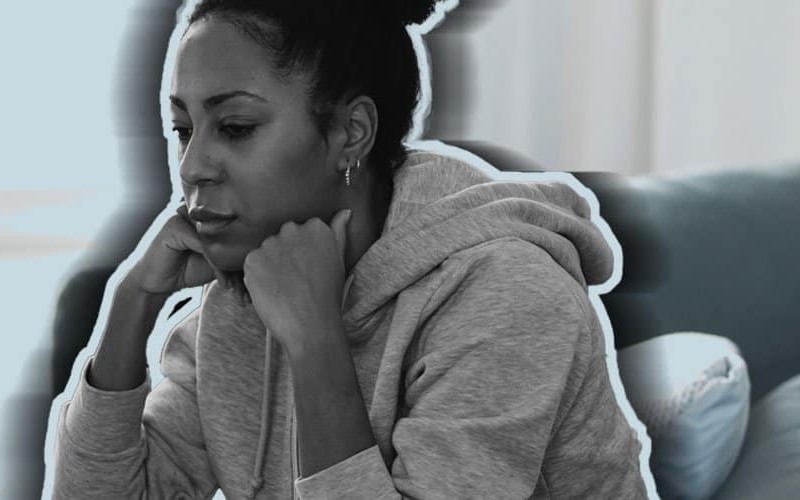The Reasons Why Survivors of Domestic Violence Don’t “Just Leave”
Domestic abuse is a deeply complicated issue, and it’s never as simple as “just leaving.” Find out why survivors may feel trapped in their situations, and what can be done to help them.

When it comes to domestic abuse, victims are often faced with the same unhelpful and hurtful questions: why didn’t you just leave? It’s a form of victim-blaming that shifts the blame onto the wrong person, and it’s incredibly damaging and harmful.
The truth is, leaving an abuser isn’t as simple as it may seem.
Everyone’s situation is unique, and the reasons why someone stays in an abusive relationship are complex and varied. But let’s be clear – the victim should never be blamed for the abuse they have suffered.
That being said, there are certain motives that are common among victims, and they can help explain why breaking free from the cycle of violence is so difficult:
Fear of Retaliation
The National Coalition Against Domestic Violence reports that 1 in 4 women and 1 in 7 men have experienced severe physical violence, such as beating, burning, or strangling, from an intimate partner at some point in their lives. Additionally, according to NCBI, domestic violence is responsible for over 1500 deaths in the United States every year.
Abusers are dangerous and unpredictable. It’s natural for victims to fear for their safety and worry that speaking out or seeking help could lead to their death. Often, abusers use the threat of murder to maintain control over their victims. These statistics highlight the harsh reality that victims face, and it’s not just about the numbers. When it comes down to it, humans will do whatever it takes to survive.
Financial Dependency and Isolation
A crucial aspect of domestic abuse is the abuser’s narcissistic manipulative behavior. Victims often find themselves trapped in a cycle of violence because the abuser exerts complete control over their lives. One tactic is to isolate the victim from their family and friends, making it almost impossible for them to leave the abusive relationship.
In some cases, the abuser is also the primary source of income, using this as yet another manipulation technique called financial abuse. The victim may feel threatened with losing their home or going hungry, especially if there are children involved. Vulnerable individuals such as children or elderly persons may depend entirely on the abuser to meet their basic needs.
Stockholm Syndrome
Stockholm Syndrome is a psychological condition that can develop in people who are held captive and abused by their captors. Essentially, the victim starts to form a bond or even sympathy towards the abuser, oftentimes because they believe it will lead to less harm and kind treatment. This is especially common in children who are being abused by a parent or guardian figure who they should be able to trust and rely on for protection.
The syndrome can also cause the victim to develop negative feelings towards those who are trying to rescue them. While the research on Stockholm syndrome is still ongoing, experts believe that this could be a survival and coping mechanism that develops after being in an incredibly frightening situation. This phenomenon highlights the deep psychological effects of abuse and captivity.
Familiarity becomes a comfort for abuse victims
It’s not uncommon for victims of abuse to be in a relationship with someone they trust or love, whether it’s a partner, spouse, parent, or another close figure in their life. This person is often responsible for meeting their basic needs for survival, which can make it incredibly difficult for the victim to remove themselves from the situation.
When the thought of leaving does come up, it’s natural for uncertainty to arise. Victims may worry about what will happen next and whether they’ll be able to cope without the abuser. After all, this person may be all they’ve ever known and relied on, which can make the idea of leaving feel even more daunting.
Grooming
Grooming is a predatory tactic that can be used by abusers to establish control over their victims. It often starts with subtle signs of affection and attention, gradually escalating to more intense displays of love and devotion. In some cases, the abuser may even seem to be the perfect partner, catering to the victim’s every need and showering them with gifts and attention.
The purpose of grooming is to establish a deep emotional connection between the abuser and the victim. By doing so, the abuser can manipulate and control their victim more easily. The victim may feel trapped in the relationship, believing that they have no other option but to stay with the abuser. The abuser may also use the victim’s feelings of love and loyalty to keep them quiet about the abuse, warning them that no one else would love them as much as they do.
Grooming can take many different forms, and it can be difficult for the victim to recognize what is happening. They may believe that the abuser truly cares for them and that the abuse is just a temporary setback in an otherwise loving relationship. However, the reality is that grooming is a calculated tactic that abusers use to establish control over their victims.
Social and Cultural Barriers
The plight of Latinas in the US who are victims of domestic abuse cannot be ignored. The statistics, such as those from Esperanza United‘s research, are alarming: about 1 in 3 Latinas will fall victim to intimate partner violence at some point in their lives. The obstacles that they must surmount to seek help are no less intimidating, compounding the trauma and sense of isolation they may already be experiencing.
Language barriers, lack of legal documentation, fear of deportation, limited access to resources, and cultural beliefs that prioritize family unity and loyalty all contribute to the challenges that Latina victims of domestic abuse face. Additionally, there is the very real fear of being ostracized by their community, which can make it incredibly difficult for them to report the abuse or seek medical and legal assistance. All of these challenges combine to create a daunting road to recovery and healing for survivors.
The issue of domestic abuse is multifaceted, and there is no single reason why victims may stay in an abusive relationship. However, it is important to understand that the victim is never to blame for the abuse they endure. It is the abuser who is responsible for their actions, and it is up to society to hold them accountable for their behavior.
Instead of questioning the victim’s choices or actions, it’s crucial that we shift our focus to the abuser and why they feel entitled to use violence as a means of control. We must work to create a culture that supports and empowers victims of abuse, providing them with resources, and helping them to break free from the cycle of violence.
If you or someone you know is experiencing domestic violence, help is available. You are not alone. The National Domestic Violence Hotline is available 24/7 to provide confidential support, resources, and information. Call 1-800-799-SAFE (7233) or visit their website to chat online with a trained advocate.




